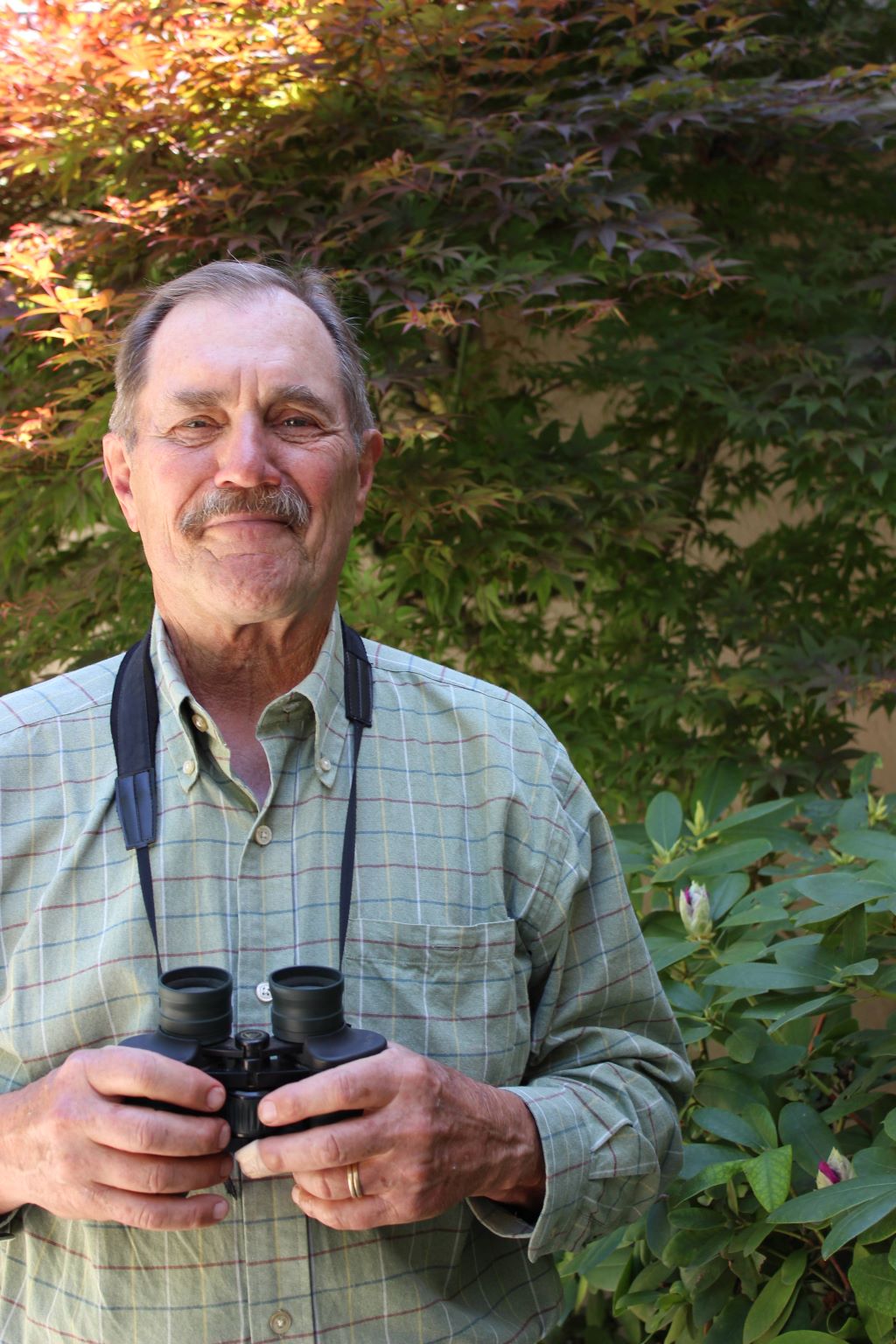
I was in Warsaw, Poland about ten years ago, just being a tourist. As my wife and I walked through the main square we noticed a lot of commotion and people gathering. We were curious so we stood around for a few minutes to see what was up and all of a sudden a car pulls up and Prince Charles exits to greet the crowd. I got a poor photo but it shows that I was about 20 feet from the prince. Over the years I have run into entertainment stars (Telly Savalas, Jerry Lewis, Art Carney) and a couple of years ago I sat two seats behind Nancy Pelosi on a flight to Denver.
Sightings of birds are different. They don’t travel all over the place like famous people do; most are restricted to a certain part of the world and certain habitats. It takes a bit of experience to accurately identify bird species and geographic location is a big clue. I get asked almost every day to identify a bird somewhere in the world based on a photo or description. I’m pretty good at that but some IDs are a real challenge. Recently I was sent a poor photo of a bird in a zoo; having no habitat, normal behavior or geographic location to go on, it took me two days to identify the Chestnut-breasted Malkoha.
People also send me their sightings which they think might be unusual or a new species or some other kind of oddity. Albinos or partial albino birds are not unusual but many people have not seen them. Apparently inexperienced bird watchers come up with really odd stuff – five foot tall Roadrunners in Arizona, Cuban Bee Hummingbirds in New York, Black-billed Magpies in Maine, Aplomado Falcons in British Columbia and other such very unlikely stuff. A number of times Ivory-billed Woodpecker sightings are relayed to me and the people who saw these birds are usually adamant that they are correct. Even the guy who say Ivory-billed Woodpeckers in the Pacific northwest, where they never were, said “I know what I saw.”
People who report odd sightings often have no evidence except their own eyes. I always recommend that they take a photo. When I did mention that once, I was told that “nobody carries a camera around all the time.” Well, yes they do – cell phones with their cameras are extremely common. (By the way, has anyone noticed that since cell phone cameras have become ubiquitious – most everyone has one- there are no more blurry shots of bigfoot or UFOs? )
I can easily reject and explain the non-existence of giant roadrunners, but if someone identifies a bird which is clearly way out of its home range, it’s possible that sighting is valid and I’d never say impossible, but mildly to highly unlikely. This year with a mild winter has seen lots of birds wintering farther north than they usually do; someone in Oregon spotted a Bullocks’s Oriole in March at their bird feeder, a bird that should be in Mexico at this time of year. Once an Emperor Goose showed up on the Sacramento River and a Laysan Albatross hung around the freshwater Whiskeytown Reservoir in northern California for a week, 150 miles from the Pacific Ocean. And there are always escaped caged birds flying around, generating talk among birdwatchers. I’ve spotted a couple of parrots, Bobwhite Quail, and Chukar Partridge right around my house over the years.
But if I see something I know shouldn’t be around, I look at it very carefully. After 50 years of birdwatching, I can still be fooled. That’s one of the things that’s great about this avocation – it’s always a challenge because oddities can show up anywhere anytime.